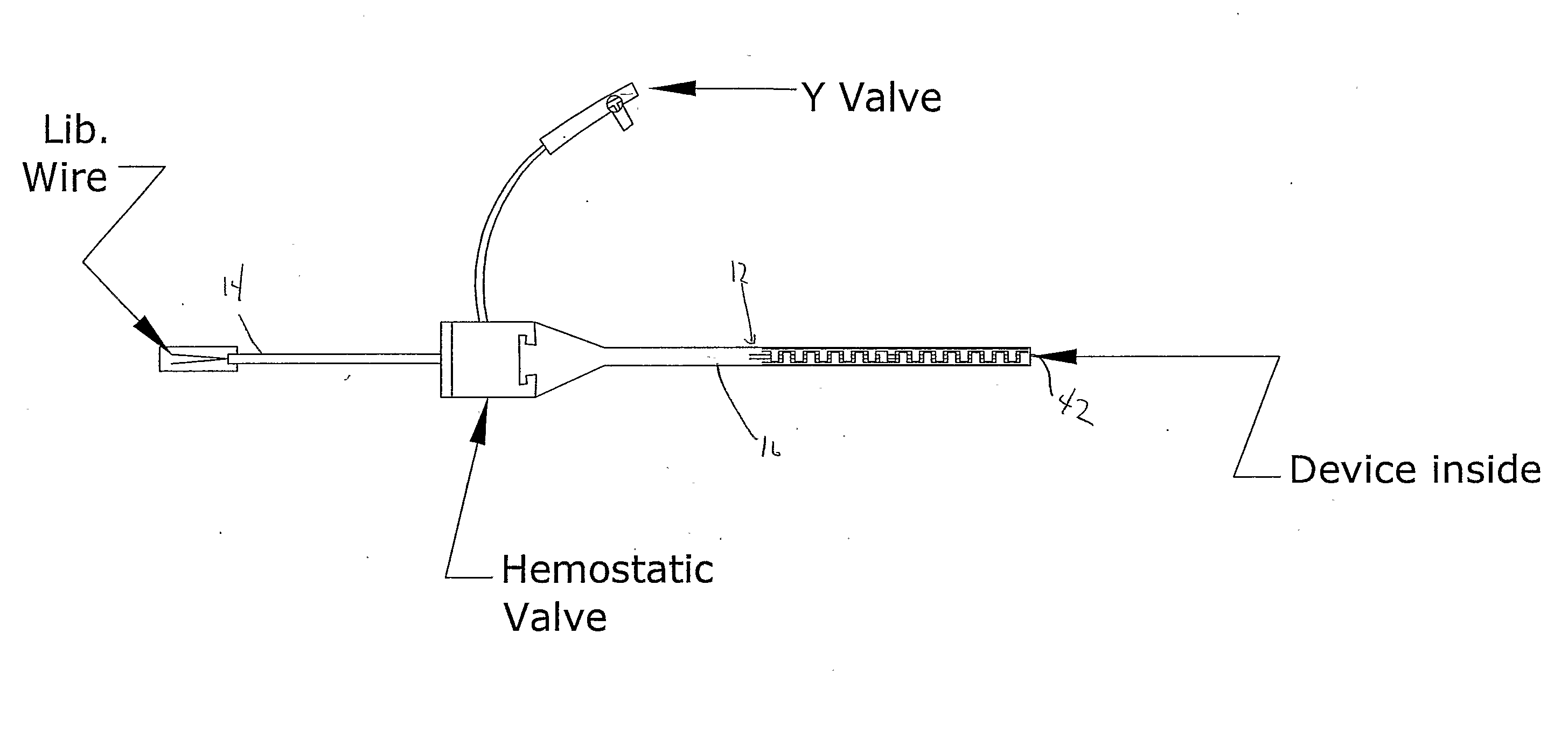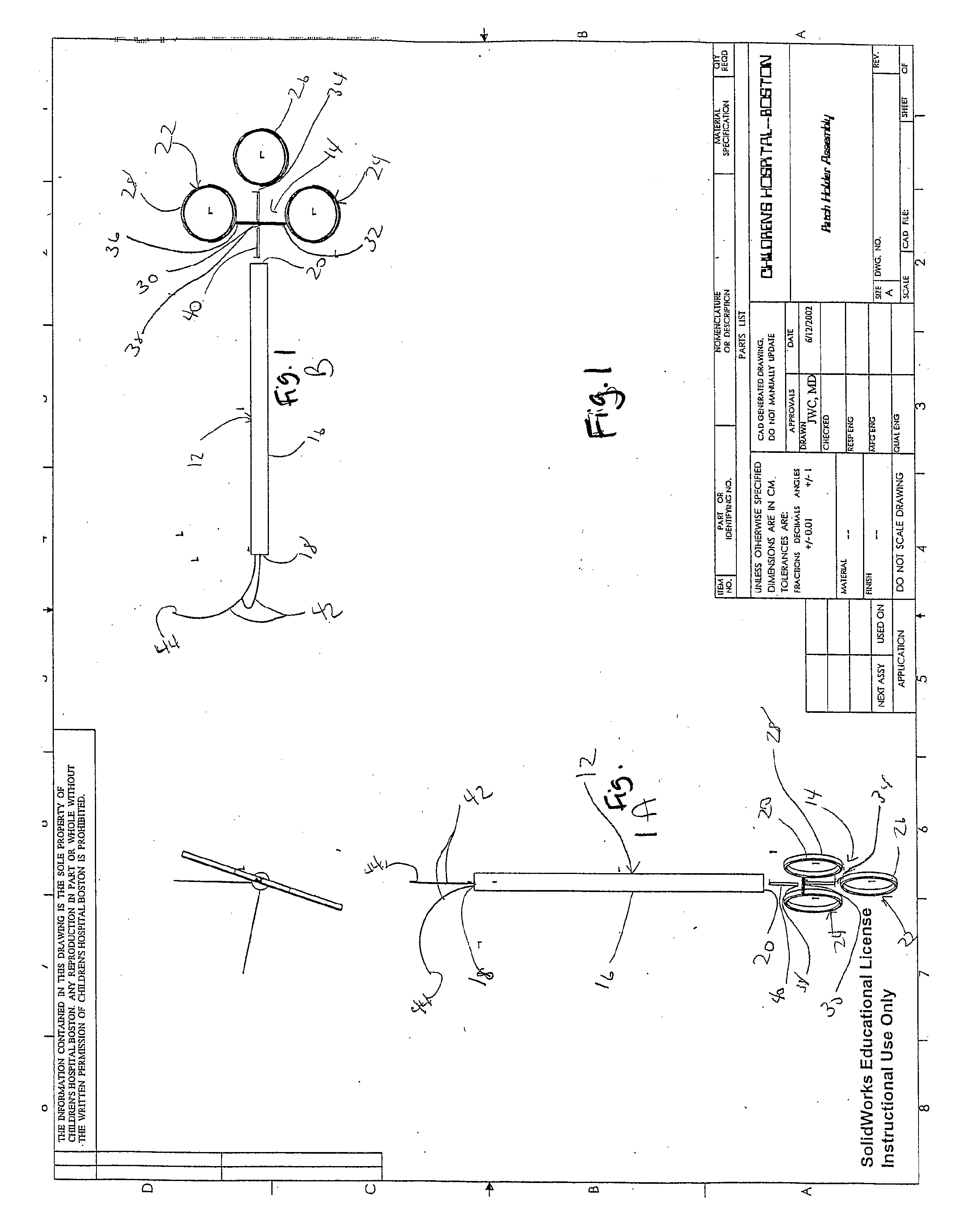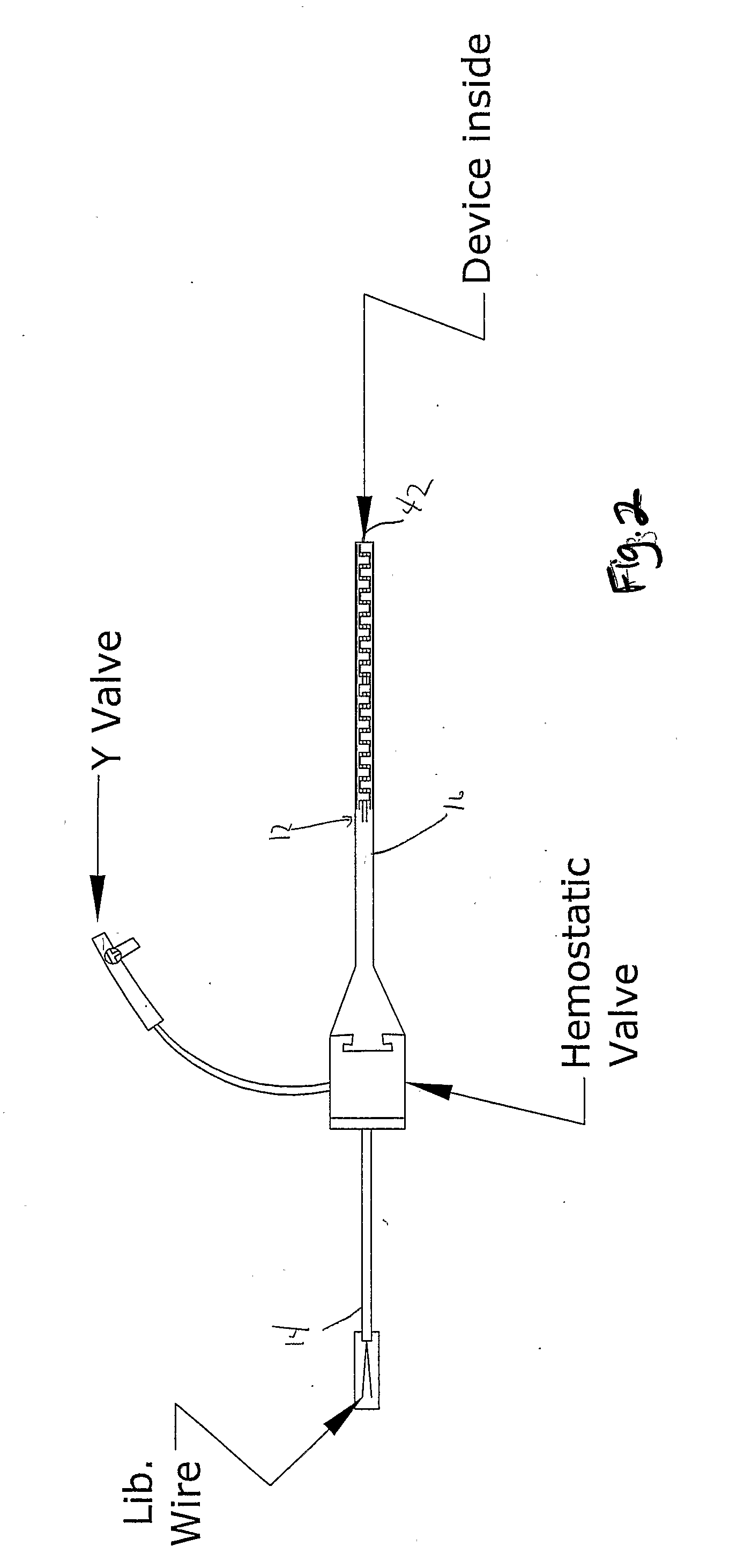Constructing an arterial
anastomosis is technically challenging for a surgeon in open
surgical procedures, and is almost a technical impossibility using minimally invasive techniques.
Ions pass in and out of the channels, and the change in concentration of ions from within a
cell to outside of a
cell results in an electrical potential, causing the
cell itself to depolarize and repolarize.
Making several incisions in cardiac tissue can interrupt this
cascade during
surgery and change the beating of the heart.
Many factors contribute to the difficulty of performing arterial replacement or
bypass grafting.
If one of the tissues is affixed too close to its edge, the suture can rip through the tissue and impair both the tissue and the
anastomosis.
Another factor is that, even after the tissues are properly aligned, it is difficult and
time consuming to pass the needle through the tissues, form the knot in the suture material, and ensure that the suture material does not become tangled.
These difficulties are exacerbated by the small size of the
artery and graft.
A graft is typically about the same size as the
artery to which it is being attached, thus further complicating the procedure.
Another factor contributing to the difficulty of such procedures is the limited time available to complete the procedure.
The time to complete an arterial replacement or bypass graft is limited because there is no blood flowing through the
artery while the procedure is being done.
If
blood flow is not promptly restored, sometimes in as little as thirty minutes, the tissue that the artery supplies blood to may experience significant damage, or even death (
tissue necrosis).
In addition, arterial replacement or
bypass grafting is made more difficult by the need to accurately place and space the sutures to achieve a permanent hemostatic seal.
The difficulty of suturing a graft to an artery using minimally invasive surgical techniques has effectively prevented the safe use of this technology in both
peripheral vascular and cardiovascular
surgical procedures.
When manipulating instruments through cannulas, it is extremely difficult to position tissues in their proper alignment with respect to each other, pass a needle through the tissues, form a knot in the suture material once the tissues are aligned, and prevent the suture material from becoming tangled.
Therefore, although there have been isolated reports of vascular anastomoses being formed by minimally
invasive surgery, no
system has been provided for wide-spread surgical use which would allow such procedures to be performed safely within the prescribed time limits.
The precision of image-based pre-
surgical planning often greatly exceeds the precision of actual surgical execution.
Precise surgical execution has been limited to procedures, such as brain biopsies, in which a suitable stereotactic frame is available.
The inconvenience and restricted applicability of such a frame or device has led many researchers to explore the use of robotic devices to augment a surgeon's ability to perform geometrically precise tasks planned from
computed tomography (CT) or other image data.
Machines are very precise and untiring and can be equipped with any number of sensory feedback devices.
On the other hand, surgeons are very dexterous.
Stabilizers and retractors still require significant time and complexity to
expose the host vessel and suture the bypass graft to the host vessel wall.
Shunts not only add to the complexity and length of the procedure, but they require a secondary procedure to close the
insertion sites proximal and distal to the
anastomosis site.
The end-end devices are amenable to reattaching severed vessels but are not suitable to producing end-end anastomoses between a bypass graft and an intact vessel, especially when
exposure to the vessel is limited.
Even though these and other clipping and stapling end-side anastomotic devices have been designed to decrease the time required to create the anastomosis, interruption of
blood flow through the host vessel increases the morbidity and mortality of
bypass grafting procedures, especially during
beating heart CABG procedures.
 Login to View More
Login to View More  Login to View More
Login to View More 


